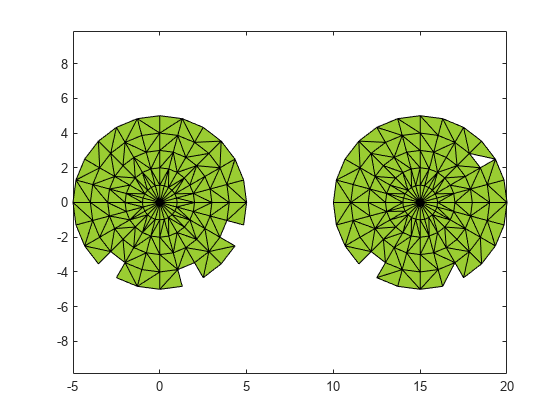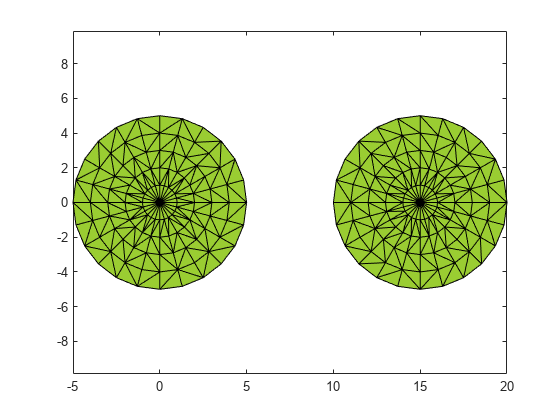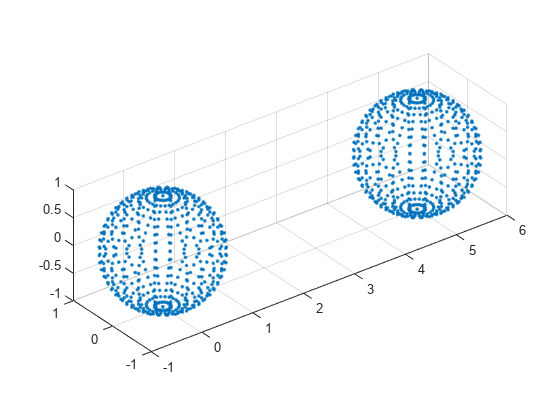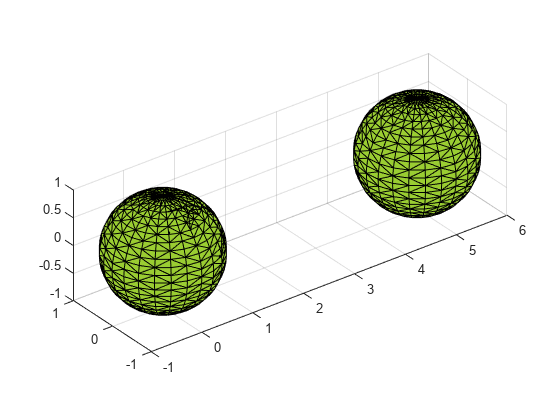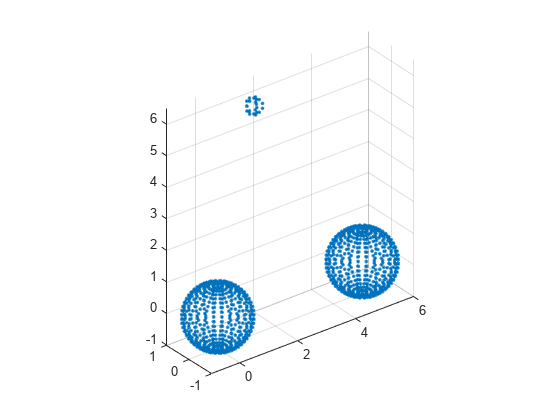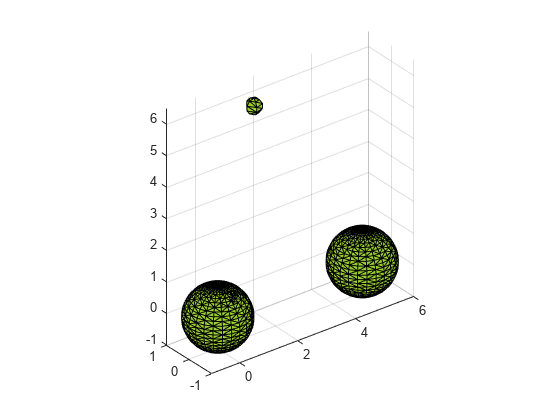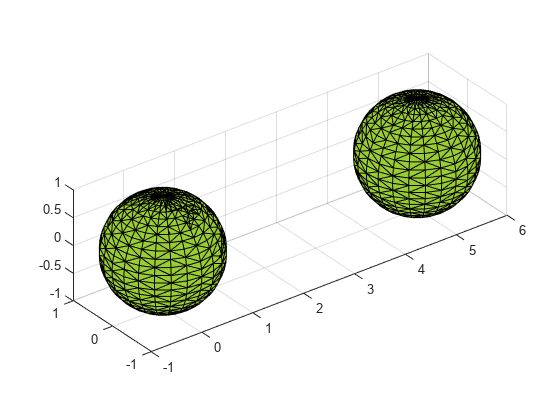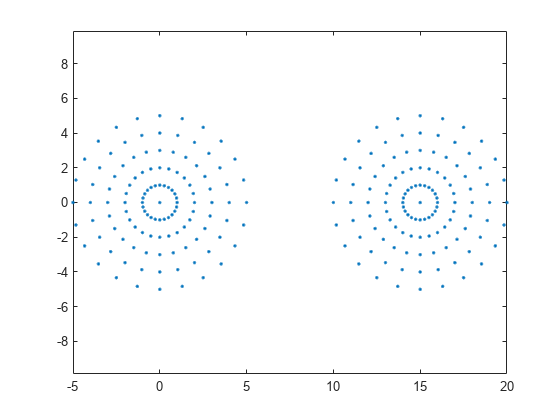alphaShape
2 次元および 3 次元の点で構成される多角形および多面体
説明
alphaShape は、2 次元または 3 次元の一連の点を囲む境界領域または境界ボリュームを作成します。alphaShape オブジェクトを操作して点にどれくらい厳密に近似させるかを調整することで、凹領域を作成できます。また、点の追加や削除、あるいは穴や領域の抑制もできます。
alphaShape オブジェクトの作成後、幾何学的なクエリを実行できます。たとえば、点が形状の内側にあるかどうかを確認したり、形状を構成する領域の数を求めたりできます。また、面積、周囲長、表面積、体積などの有用な数量を計算し、視覚的検証のために形状をプロットすることもできます。
作成
alphaShape オブジェクトを作成するには、形状の頂点を定義する入力引数をもつ関数 alphaShape を使用します。alphaShape の作成時に、アルファ半径および穴または領域のしきい値を指定することもできます。
構文
説明
shp = alphaShape(___,Name,Value)Name,Value のペアの引数によって指定された追加オプションを使用します。たとえば、'HoleThreshold' を使用して内部の穴や隙間を抑制できます。
入力引数
名前と値の引数
プロパティ
オブジェクト関数
alphaSpectrum | 独立したアルファ形状を生成するアルファ値 |
criticalAlpha | 形状の臨界遷移を定義するアルファ半径 |
numRegions | アルファ形状の領域の数 |
inShape | 点がアルファ形状の内側にあるかどうかを判定 |
alphaTriangulation | アルファ形状を塗りつぶす三角形分割 |
boundaryFacets | アルファ形状の境界の小平面 |
perimeter | 2 次元アルファ形状の周囲長 |
area | 2 次元アルファ形状の面積 |
surfaceArea | 3 次元アルファ形状の表面積 |
volume | 3 次元アルファ形状の体積 |
plot | アルファ形状のプロット |
nearestNeighbor | アルファ形状の最近傍の境界点を求める |
例
拡張機能
バージョン履歴
R2014b で導入

